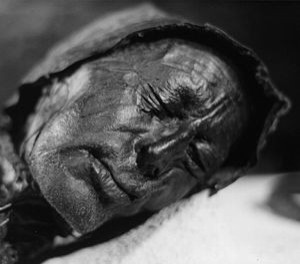2,000-Year-Old Body Found in Irish Bog

A 2,000-year-old body thought to be that of a victim of human sacrifice was found in an Irish Bog, experts said Friday.
Initial examinations on the body, found just outside Portalaoise, central Ireland, indicated it could be a young woman, the Irish Times reported.
The National Museum of Ireland said the find was "very exciting" as it was one of very few bog bodies discovered in situ, meaning not only the remains can be analyzed, but its environment, too.
Ned Kelly, keeper at the museum, said although 10 bog bodies had been found in Ireland, many were not well preserved and some were just parts of bodies removed from their sites and found inside milling machines.
"At present, we can see a pair of legs, which are quite well preserved, probably the best preserved part of the body. On preliminary examination, we can be reasonably certain that it is a late prehistoric bog body. This was probably a ritual deposition of a human sacrifice," Kelly said.
The body was discovered by an employee operating a milling machined Wednesday evening. The man spotted something unusual just as his machine was about to go over the area. He stopped the machine and told his manager about the find.
Work in the area ceased when the discovery was made and the National Museum of Ireland contacted.
© Copyright IBTimes 2024. All rights reserved.





















